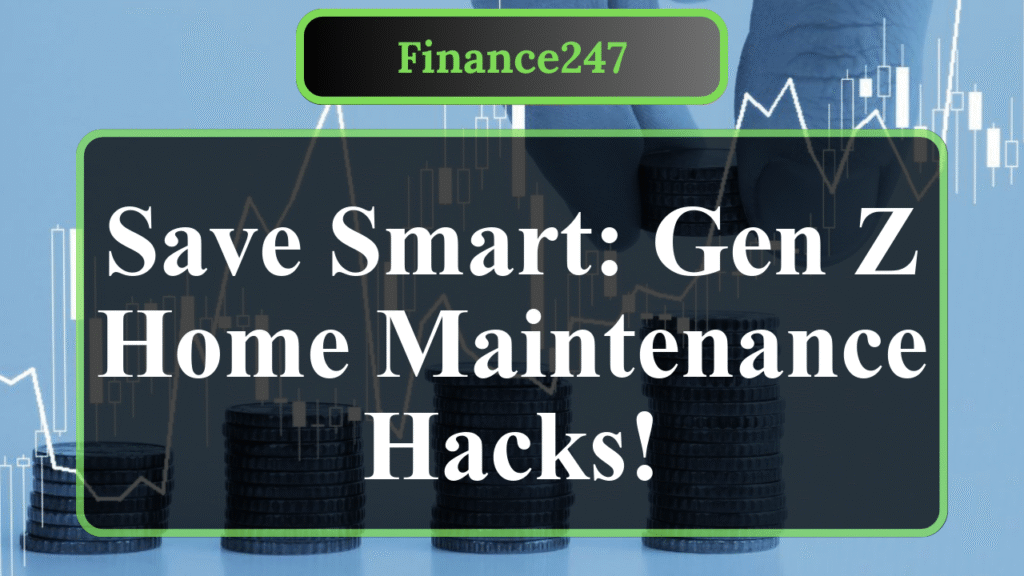“Gen Z homeowners face unique financial challenges. This article offers practical budgeting strategies for home maintenance, including the 1-4% rule, emergency funds, and leveraging warranties. Learn how to assess home component lifespans, prioritize repairs, and use apps to track expenses, ensuring your home remains a valuable asset without breaking the bank.”
Smart Budgeting for Gen Z Home Maintenance
As a Gen Z homeowner, you’re likely navigating the financial landscape with a mix of enthusiasm and caution. Homeownership is a significant milestone, but it comes with ongoing maintenance costs that can catch you off guard. Budgeting effectively for these expenses is crucial to protect your investment and avoid financial strain. Here’s how to plan for home maintenance while keeping your finances in check.
Understand the 1-4% Rule
A widely recommended guideline is to budget 1-4% of your home’s value annually for maintenance and repairs. For example, if your home is valued at $300,000, you should set aside $3,000 to $12,000 each year. This range accounts for factors like the age of your home, its condition, and your location. Older homes or those in harsher climates may require closer to the higher end, while newer homes might need less. For Gen Z homeowners, who often stretch budgets to afford a home, starting with 1-2% is a practical goal, adjusting as you learn your home’s needs.
Assess Your Home’s Needs
Every home has components with finite lifespans—roofs, HVAC systems, appliances, and more. Understanding these can help you plan. For instance, asphalt shingle roofs last 15-30 years, costing $5,000-$30,000 to replace, while furnaces typically last 15 years, with replacements averaging $3,500. Use resources like the International Association of Certified Home Inspectors for lifespan estimates. Alternatively, hire a home inspector for a maintenance inspection, which costs $400-$500 but provides a detailed report on when systems might need replacement. This is especially useful for Gen Z buyers who may have purchased older homes due to affordability.
Build an Emergency Fund
Unexpected repairs, like a burst pipe or a failing water heater, can derail your budget. Experts suggest setting aside 10-20% of your maintenance budget for emergencies. For a $300,000 home, this means $300-$2,400 annually in a dedicated high-yield savings account. According to Angi’s 2023 State of Home Spending report, homeowners spent an average of $1,667 on emergency repairs, highlighting the need for a financial cushion. Automate monthly transfers to this fund to ensure consistency.
Leverage Home Warranties
Home warranties can be a game-changer for Gen Z homeowners on tight budgets. These policies, costing $600-$700 annually, cover repairs or replacements for major systems like HVAC or appliances, with a small service fee per repair. They act as a budgeting tool by spreading costs over time, reducing the sting of sudden expenses. Ensure you read the terms to understand coverage limits. This option is particularly appealing if you’re new to homeownership and wary of unpredictable repair costs.
Prioritize Routine Maintenance
Proactive maintenance prevents costly repairs. Regular tasks like gutter cleaning ($100+ per service), HVAC tune-ups ($100-$200 annually), and replacing air filters ($2-$40 quarterly) extend system lifespans. Gen Z homeowners, who complete outdoor tasks faster than other generations, can save by tackling DIY projects like lawn care or painting. However, know when to call professionals for complex tasks like electrical or plumbing work to avoid costly mistakes.
Track Expenses with Technology
Use apps like HomeZada or Househappy to manage your maintenance budget. These tools track tasks, set reminders, and store receipts, helping you monitor spending and plan for future repairs. Tracking also provides valuable data if you sell your home, showcasing its upkeep history. Gen Z’s tech-savvy nature makes these tools a natural fit for staying organized and financially disciplined.
Consider Your Home’s Age and Location
Older homes, common among Gen Z buyers due to lower prices, require higher maintenance budgets. For example, homes built before 1960 spent 0.8% of their value on maintenance in 2019, compared to 0.2% for homes built in the 2010s. Location matters too—urban areas like San Francisco have higher labor costs than rural regions. Adjust your budget based on local rates and your home’s specific needs.
Plan for Big-Ticket Items
Create a spreadsheet to track major systems’ ages and replacement costs. For example, if your air conditioner is 5 years old with a 15-20 year lifespan, start saving for its $3,000-$7,000 replacement. This approach, recommended by financial experts, helps you avoid scrambling for funds when systems fail. Gen Z homeowners can benefit from this proactive strategy, especially with limited savings.
Maximize Warranties and Insurance
Check existing warranties on appliances or systems, as they can cover repairs at no extra cost. Homeowners insurance is also critical, as it protects against major losses like fires, which can exhaust maintenance savings. Review your policy annually with an agent to ensure adequate coverage, especially as repair costs rise with inflation.
Stay Flexible and Reassess Annually
Maintenance costs fluctuate based on your home’s condition and economic factors like inflation. Review your budget yearly, adjusting for recent expenses or upcoming projects. If you’ve underspent one year, roll over the savings to bolster your emergency fund. This flexibility is key for Gen Z homeowners juggling student loans, career growth, and other financial priorities.
Disclaimer: This article is for informational purposes only and does not constitute financial advice. Consult a professional for personalized guidance. Information is sourced from reputable financial websites, industry reports, and expert recommendations.

